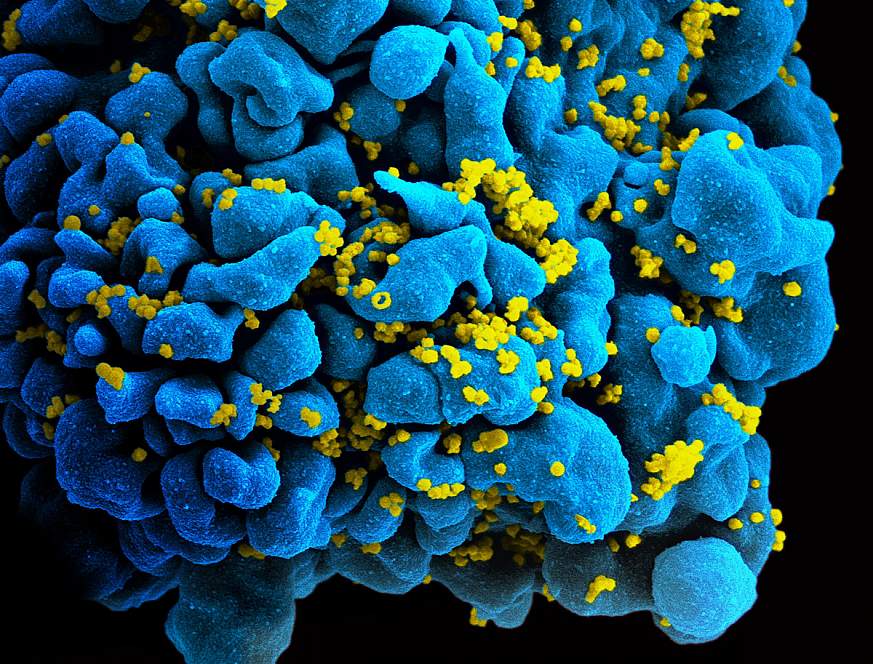You are here
News Release
Monday, February 10, 2020
Youth with HIV less likely than adults to achieve viral suppression

Despite similar rates of enrollment into medical care, youth with HIV have much lower rates of viral suppression — reducing HIV to undetectable levels — compared to adults, according to an analysis funded by the National Institutes of Health. Among more than 1,000 youth, most of whom were newly enrolled in care at treatment centers throughout the United States, 12% had attained viral suppression, far lower than the 32% to 63% observed in studies of adults over age 24. The findings suggest that after they enroll in an HIV treatment program, a low proportion of youth adhere to care regimens. The study appears in the Journal of Acquired Immune Deficiency Syndromes.
“Our findings indicate an urgency for research on how best to tailor HIV intervention services to the needs of youth,” said the study’s first author, Bill G. Kapogiannis, M.D., of the Maternal and Pediatric Infectious Diseases Branch at NIH’s Eunice Kennedy Shriver National Institute of Child Health and Human Development (NICHD). The analysis was funded by NICHD, the National Institute on Drug Abuse and the National Institute of Mental Health.
The researchers analyzed data from the Adolescent Medicine Trials Network for HIV/AIDS Interventions (ATN), an NIH-supported network of 13 sites dedicated to the health and care of youth with and at risk for HIV. The youth were enrolled in care through the SMILE (Strategic Multisite Initiative for the Identification, Linkage and Engagement in Care of Youth) Collaborative, a network of clinics at each ATN site that offers diagnostic services and referral to treatment facilities.
Among the 1,411 youth ages 12 to 24 years who were referred to the ATN sites, 75% were enrolled in care, with 34% remaining in care and beginning anti-HIV (antiretroviral) treatment and 12% achieving viral suppression after a median interval of nearly five months. Viral suppression occurs when antiretroviral therapy reduces a person’s HIV in the blood to an undetectable level. Maintaining viral suppression for at least six months after a person’s first test finds no detectable levels of the virus prevents the sexual transmission of HIV and allows people with HIV to remain healthy.
On average, youth who were referred to care within a shorter time frame after an HIV diagnosis were more likely to achieve viral suppression. Compared to youth referred to care after three months, those referred within one to six weeks were 2.5 times more likely to reach viral suppression. Those referred from six weeks to three months were roughly twice as likely to reach viral suppression.
To ensure the shortest possible time to enrollment in care, the study authors stressed the importance of enlisting trained peer counselors and of maintaining frequent contact with youth through text and social media messages. They added that additional strategies to ensure that youth enroll and remain in care are urgently needed.
The ATN is funded by NICHD, the National Institute on Drug Abuse, the National Institute of Mental Health and the National Institute on Minority Health and Health Disparities. SMILE is a collaboration between NICHD, ATN, the Centers for Disease Control and Prevention and the Health Services and Resources Administration.
About the Eunice Kennedy Shriver National Institute of Child Health and Human Development (NICHD): NICHD leads research and training to understand human development, improve reproductive health, enhance the lives of children and adolescents, and optimize abilities for all. For more information, visit https://www.nichd.nih.gov.
About the National Institutes of Health (NIH): NIH, the nation's medical research agency, includes 27 Institutes and Centers and is a component of the U.S. Department of Health and Human Services. NIH is the primary federal agency conducting and supporting basic, clinical, and translational medical research, and is investigating the causes, treatments, and cures for both common and rare diseases. For more information about NIH and its programs, visit www.nih.gov.
NIH…Turning Discovery Into Health®
Reference
Kapogiannis, BG, et al. The HIV continuum of care for adolescents and young adults attending 13 urban U.S. HIV care centers of the NICHD-ATN-CDC-HRSA SMILE Collaborative. Journal of Acquired Immune Deficiency Syndrome. 2020.
